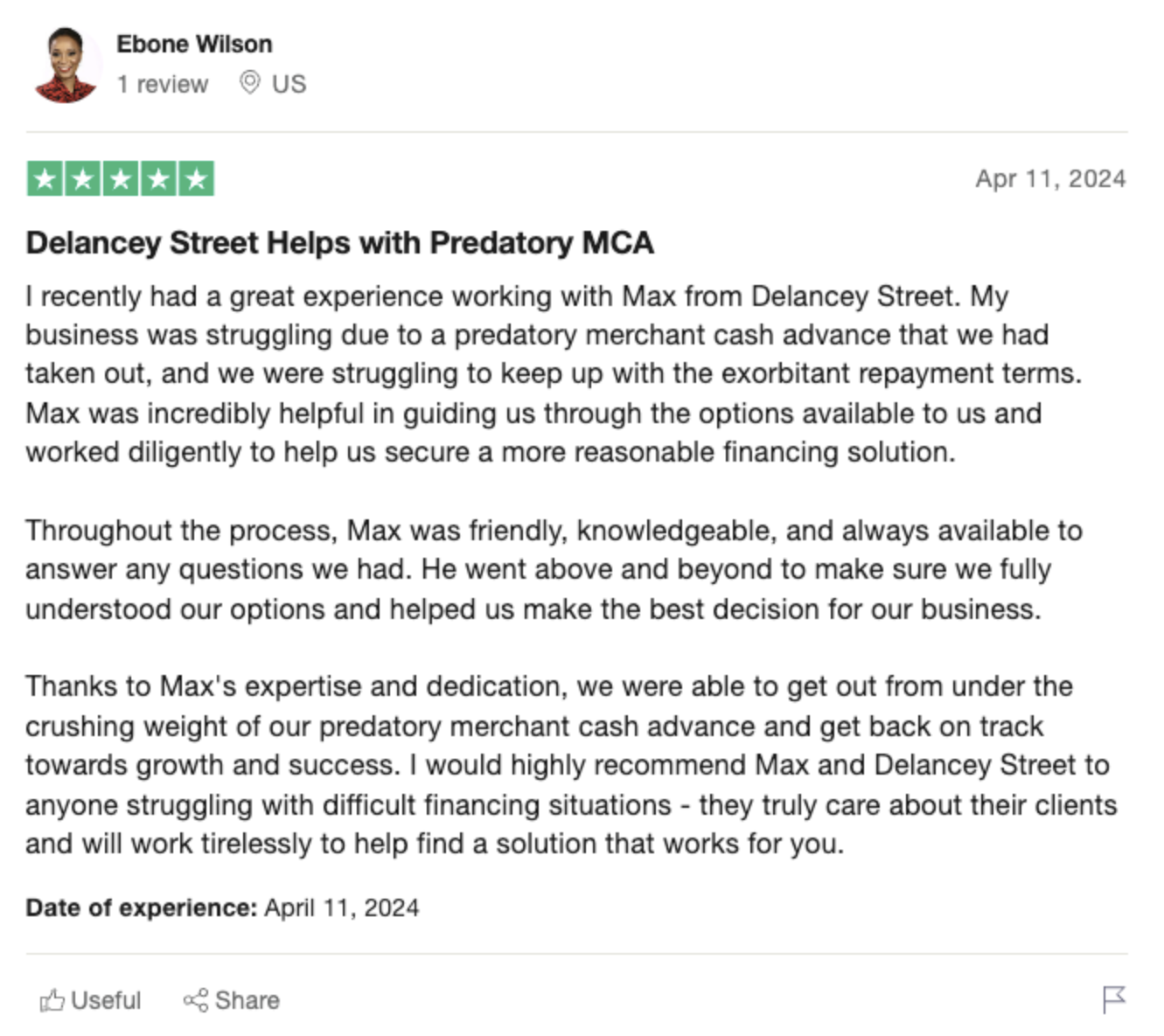Strategies to Minimize the Cost of a Merchant Cash Advance
Getting a merchant cash advance can seem like an easy way for small business owners to quickly access capital. Unlike traditional bank loans, merchant cash advances provide funding in just days or weeks, often with minimal eligibility requirements. However, merchant cash advances come at a steep price, with exorbitantly high effective interest rates that can exceed 100% APR.
If you’ve already taken out a merchant cash advance and are looking for ways to reduce the overall cost, here are some strategies to consider:
 -
-Pay Off the Advance As Quickly As Possible
The number one thing you can do to minimize the cost of your merchant cash advance is to pay it off as fast as you possibly can. The longer it takes you to repay the advance, the more you’ll pay in fees and interest.
To accelerate repayment:
- Put any extra revenue directly toward paying down the advance. Don’t spend it on other business expenses until the advance is paid off.
- See if you can increase sales by running promotions, offering new products or services, or stepping up marketing. Use the additional revenue to make larger payments.
- Look for ways to trim expenses so you can allocate more money toward repayment each day or week. Reduce inventory, cut utility costs, or eliminate unnecessary spending.
- Avoid taking out additional financing that may limit how much you can pay each day.
The quicker you can repay the advance, the less interest you’ll accrue and the more money you’ll save. Even shaving a few weeks off the repayment term can make a significant difference.
Renegotiate the Terms
Another option is to contact your merchant cash advance provider and request better terms. There may be an opportunity to:
 -
-- Reduce the daily repayment amount so it’s more affordable.
- Lower the overall interest rate or fees charged.
- Extend the repayment term so you have more time to pay back the advance.
Many providers are open to renegotiating terms if it means ensuring they get repaid. Be transparent about your financial situation and cash flow limitations to show why the current repayment schedule isn’t sustainable. Come prepared with a reasonable counteroffer.
Refinance with a Lower-Cost Option
If renegotiating with your current provider isn’t successful, look into refinancing with another source of funding that charges lower rates and fees. Options to consider include:
- A business line of credit, which typically has lower interest rates and gives you flexibility to only draw what you need.
- A business term loan that lets you pay off the advance at a fixed rate over an extended repayment period.
- An SBA loan, which offers favorable long-term financing for those who qualify.
- Factoring invoices to turn outstanding customer balances into immediate cash.
Crunching the numbers to compare costs across different products is key. Look at interest rates but also factor in origination fees, repayment terms, and other variables.
Improve Sales and Profit Margins
Bringing in more revenue and keeping more of each dollar earned are surefire ways to speed repayment. Brainstorm ways to:
- Draw in new customers through promotions, referrals, and advertising. Upselling to existing clients also helps.
- Offer high-margin products or services that bring in more profit per sale. Discontinue low-margin items that aren’t profitable.
- Renegotiate pricing and terms with vendors and suppliers to reduce input costs.
- Eliminate unnecessary overhead like subscriptions or expenses that aren’t driving growth.
- Invoice customers immediately and follow up on past due accounts to accelerate cash flow.
With more working capital coming in the door and costs trimmed where possible, you’ll be able to allocate more funds toward paying off your merchant cash advance quickly.
 -
-Change Payment Processors
Some merchant cash advance companies require you to use a specific payment processor as a condition of receiving financing. In many cases, these processors charge higher rates and fees, reducing the revenue available for repayment.
See if you can change processors after taking out the advance to one that offers better rates. Just be sure your merchant cash advance agreement doesn’t bar you from switching. Having a more favorable processor means more money in your pocket.
Make Lump Sum Payments When Possible
If you come into extra working capital from a good sales month or other source, consider making a lump sum payment on your outstanding merchant cash advance balance. This will reduce the principal owed and cut down on the interest that accrues moving forward.
 -
-Look for opportunities like:
- Saving up cash reserves during more profitable quarters to make a large payment.
- Putting a tax refund or other influx of funds toward paying down the balance.
- Tapping personal savings if affordable to make a dent in the amount due.
Work With an Attorney
If you’re struggling to repay your merchant cash advance or feel trapped in unfair terms, consulting an attorney may be wise. An attorney experienced with merchant cash advances can
- Review your agreement to identify unlawful or predatory clauses. This can be used to negotiate a settlement.
- Help formulate a repayment strategy that reduces stress on your finances.
- Advise if bankruptcy or other legal options should be explored to eliminate the debt.
Having professional legal guidance can be invaluable when navigating the complexities of getting out of a merchant cash advance. Don’t be afraid to tap legal resources as needed.
As a Last Resort, Consider Bankruptcy
Filing for bankruptcy should be a final option if all other attempts to repay or refinance your merchant cash advance fail. Generally, personal bankruptcy will discharge merchant cash advance debt, while business bankruptcy can liquidate the company and eliminate debts.
Bankruptcy has long-term consequences, however, like damaging your personal credit. Be sure to consult an attorney specializing in small business bankruptcy before taking this step. They can provide guidance on the pros, cons, and alternatives based on your specific situation.
Don’t Take on More High-Cost Financing
When trying to minimize merchant cash advance costs, it’s critical to not take on additional high-cost financing that exacerbates cash flow issues. Avoid:
- Applying for new merchant cash advances from other providers. This will multiply costs.
- Using business or personal credit cards to fund operations. Interest rates are usually exorbitant.
- Tapping into 401(k) funds, which incur taxes and penalties.
- Putting personal assets at risk with loans tied to collateral.
More expensive debt will only make paying off your existing merchant cash advance more difficult. Cut expenses or find other funding options that won’t magnify financial burdens.
Create a Repayment Plan
Developing a detailed repayment plan with milestones and targets can help you methodically eliminate your merchant cash advance debt. Track key metrics like:
- How much needs to be repaid each week or month to meet goals.
- Projected sales increases to generate the required cash flow.
- Fixed costs that can be reduced to enable faster repayment.
- Timeline for when certain amounts need to be repaid based on your schedule.
Updating projections, comparing them to actuals, and making adjustments ensures you remain focused on priorities for paying off your balance.
Don’t Wait to Take Action
The biggest mistake when trying to minimize merchant cash advance costs is waiting too long to take action. The sooner you start implementing strategies to pay off your balance, the more money you’ll save.
Don’t let fees and interest costs spiral out of control. As soon as you realize your merchant cash advance repayment schedule isn’t sustainable, start researching and executing options to eliminate your debt burden. Consistent focus on this objective will get you out of the vicious cycle of high-cost financing.
Conclusion
While merchant cash advances provide easy access to capital, they levy a heavy cost on small businesses in the form of exorbitant interest rates and fees. If you’ve taken out an advance, take steps right away to pay off your balance faster. Renegotiate terms, refinance, or take legal action if needed. With a proactive approach, you can minimize merchant cash advance costs and free up cash flow for growth.







